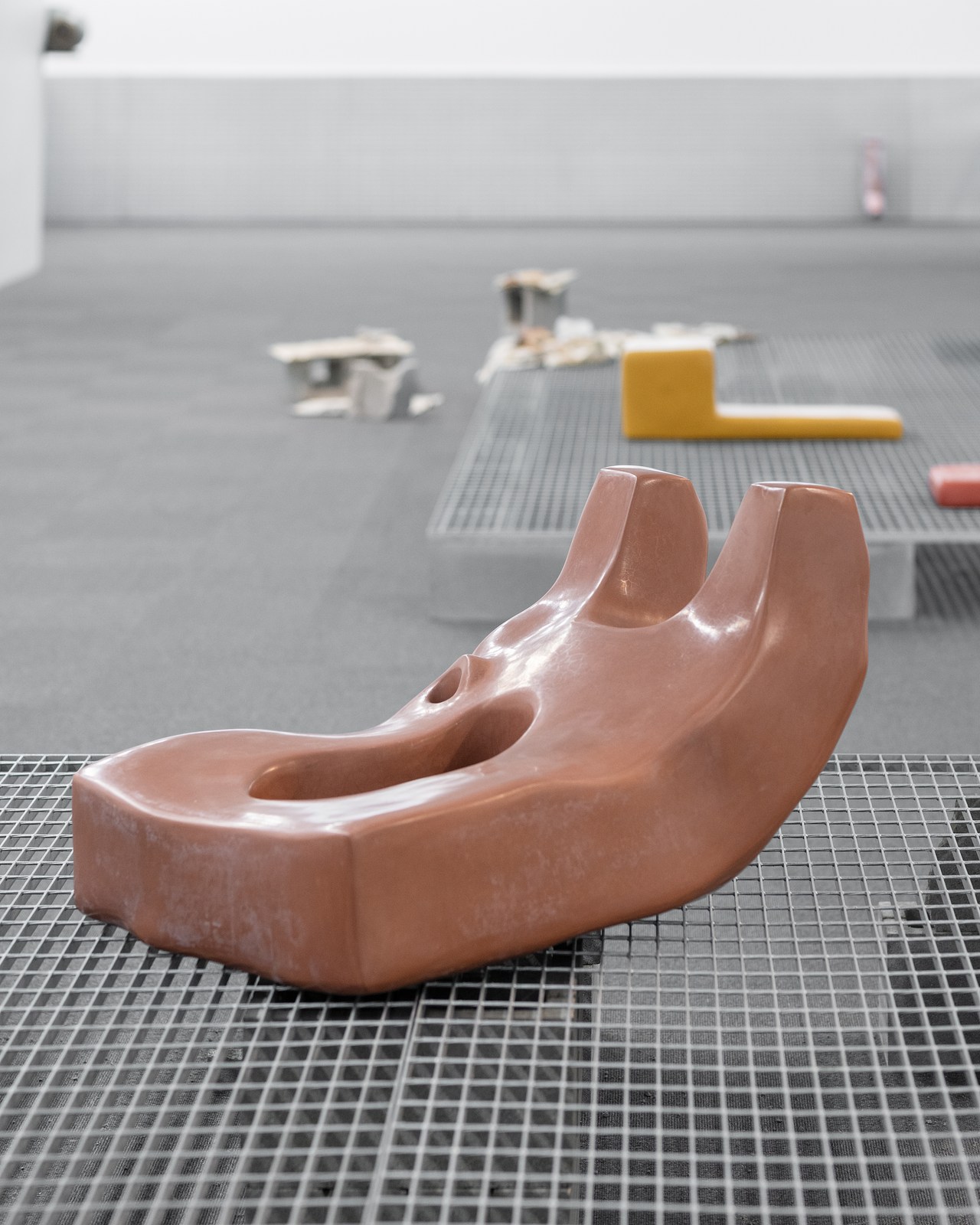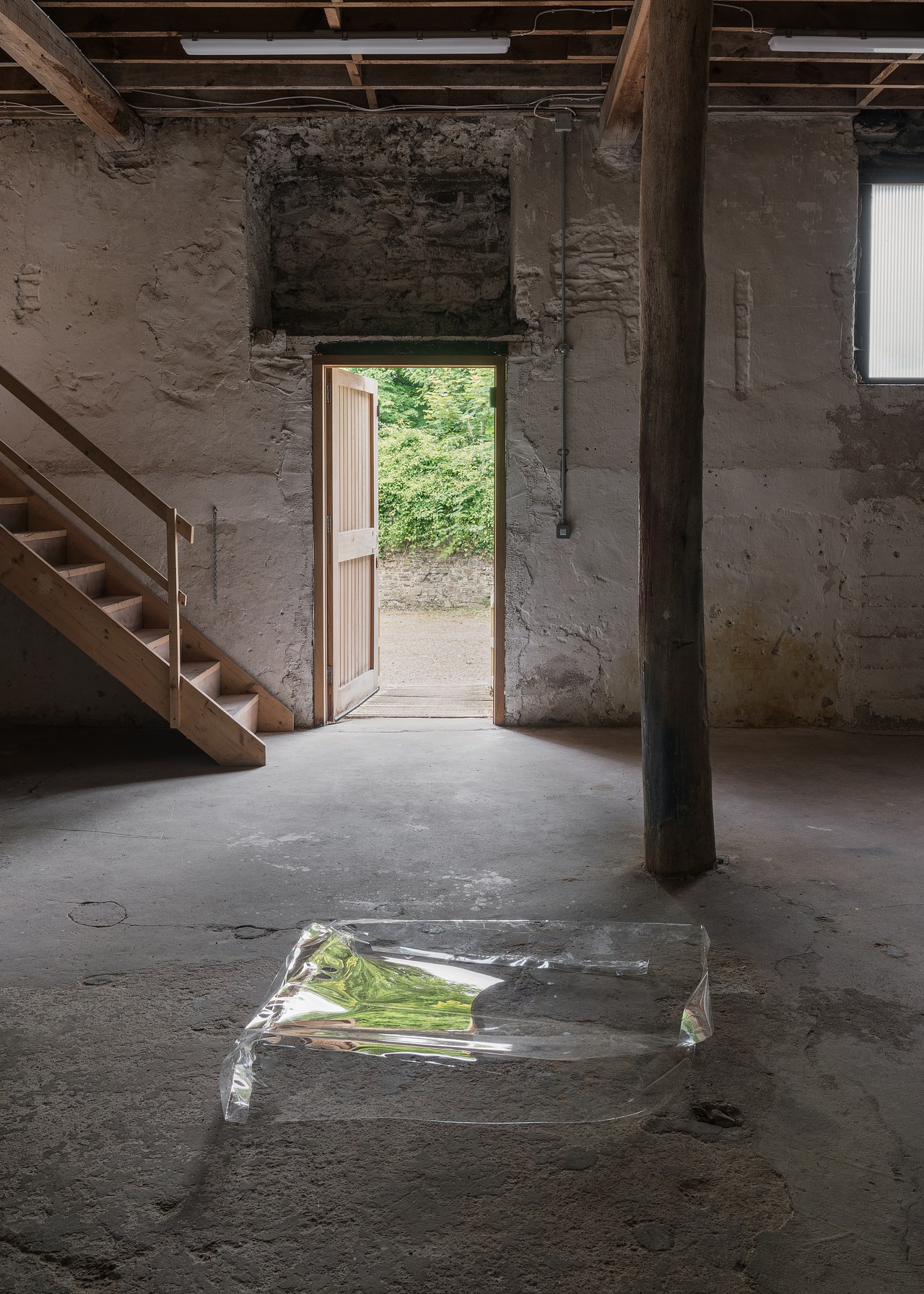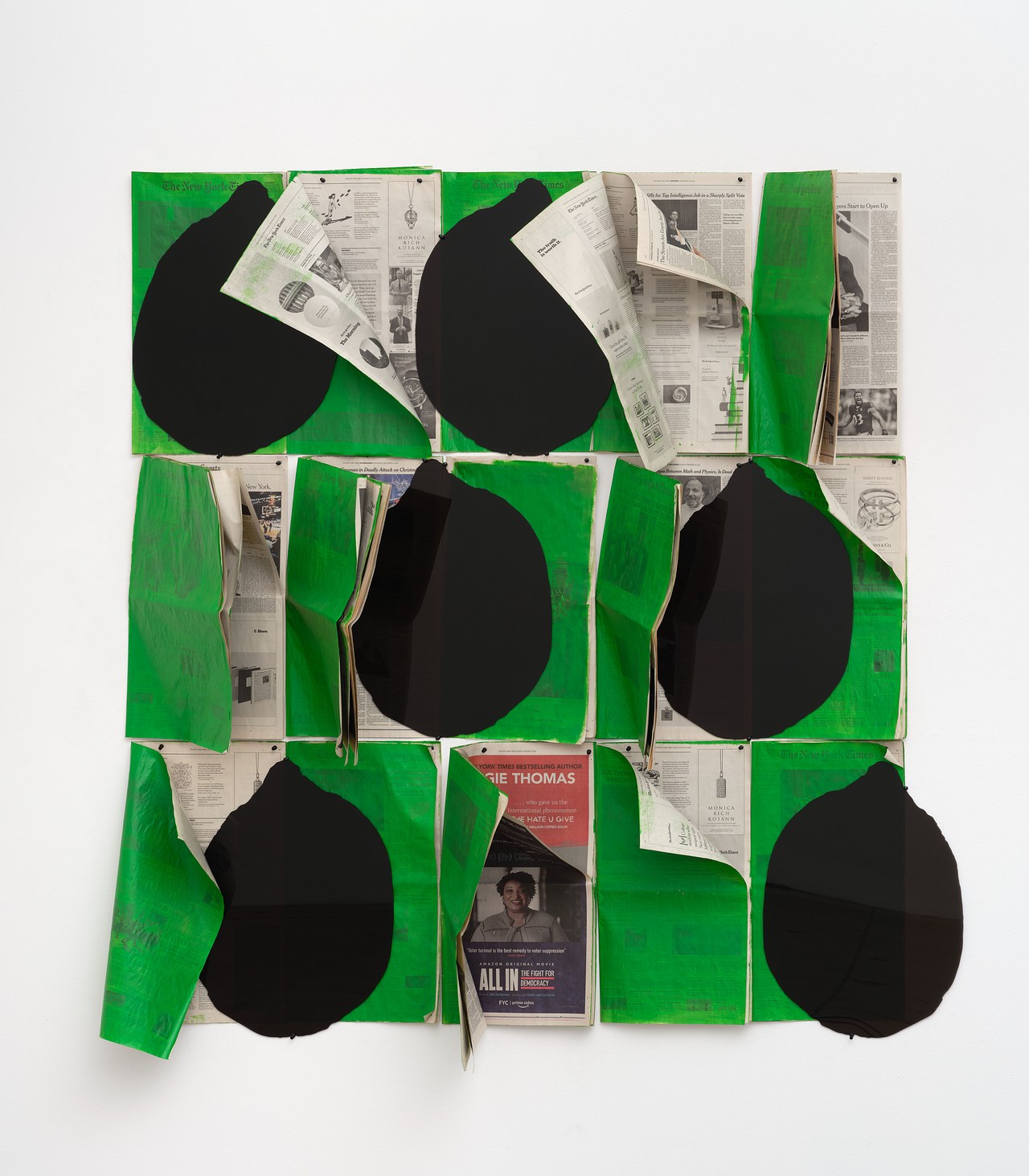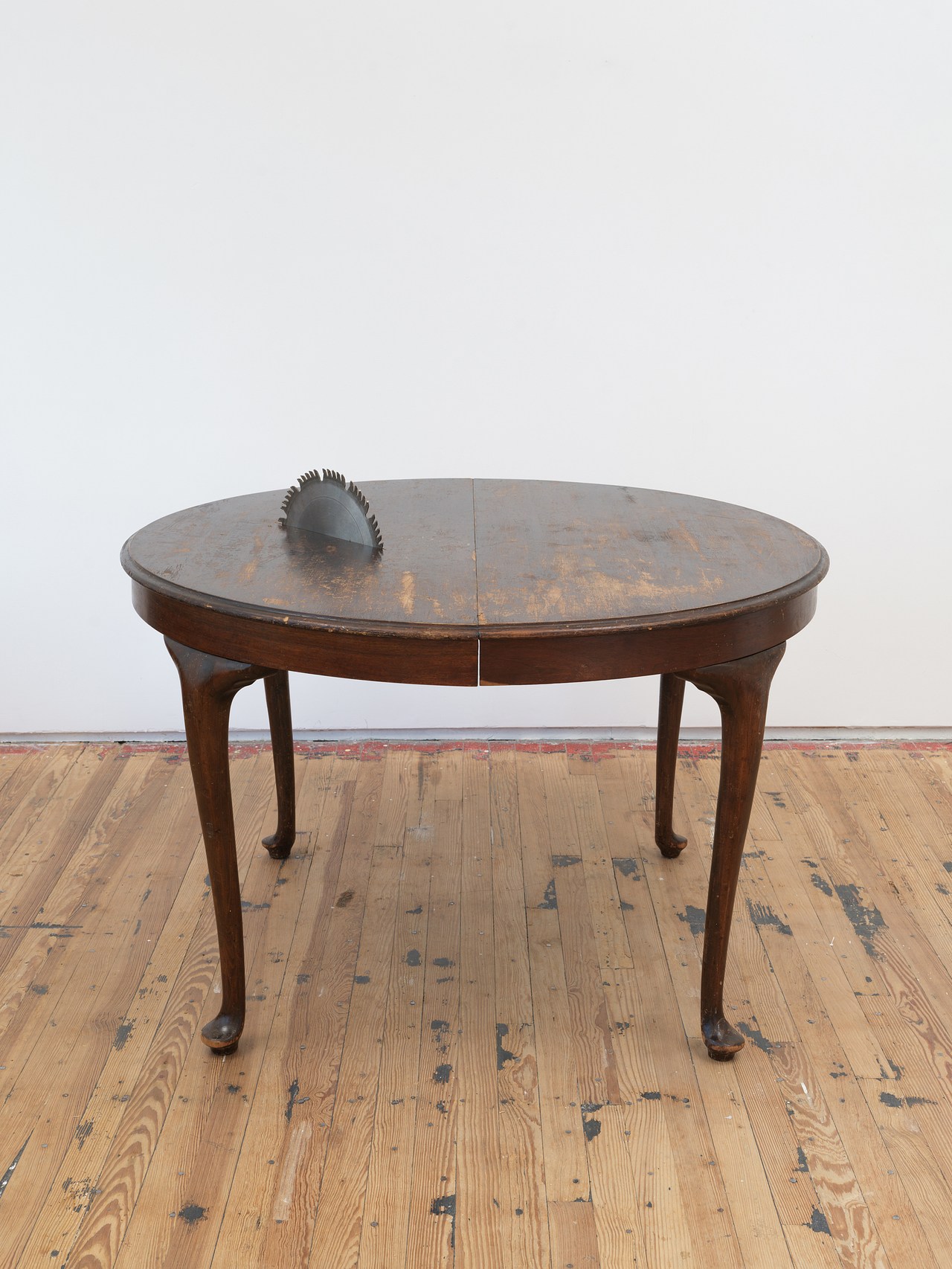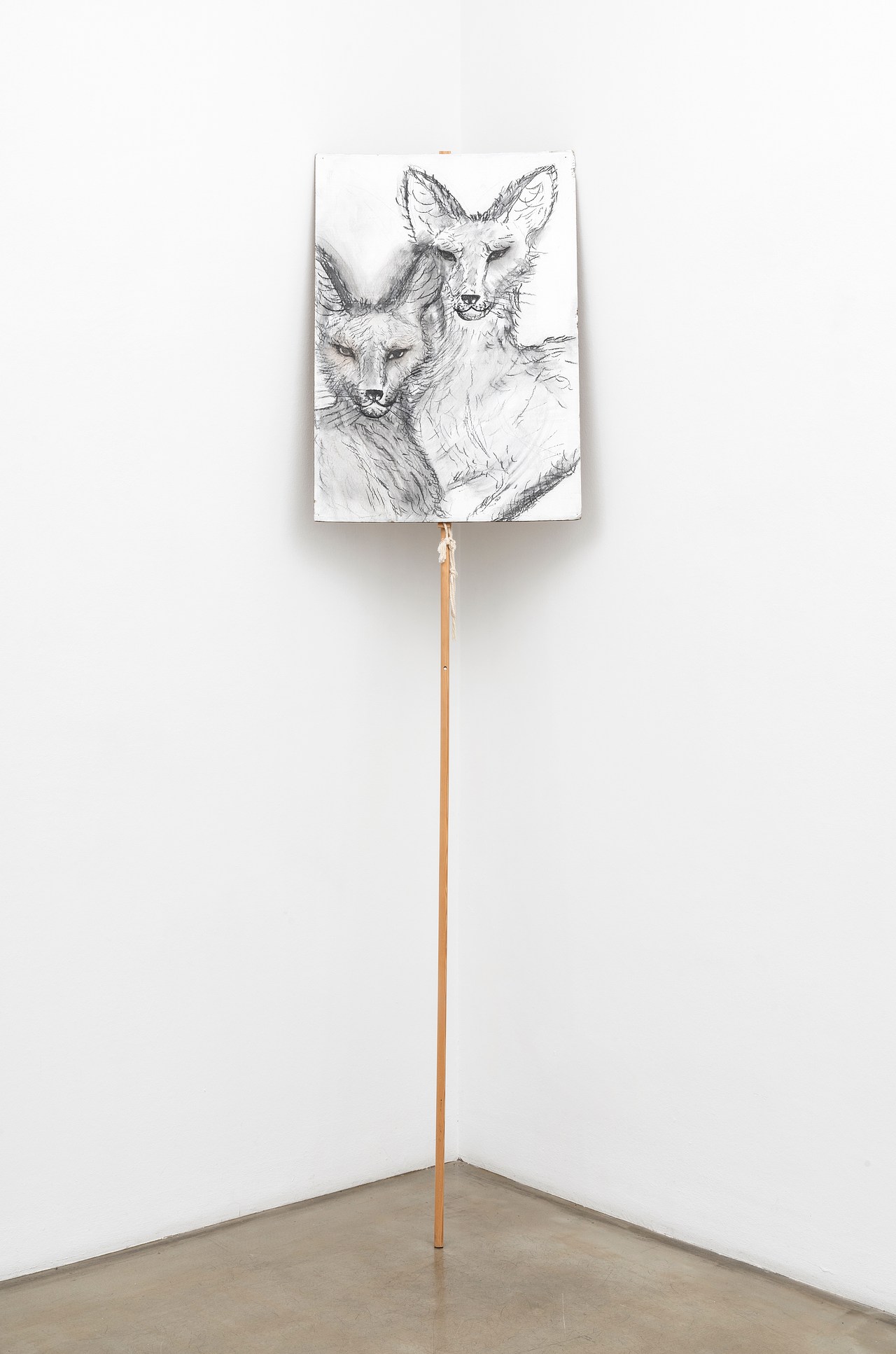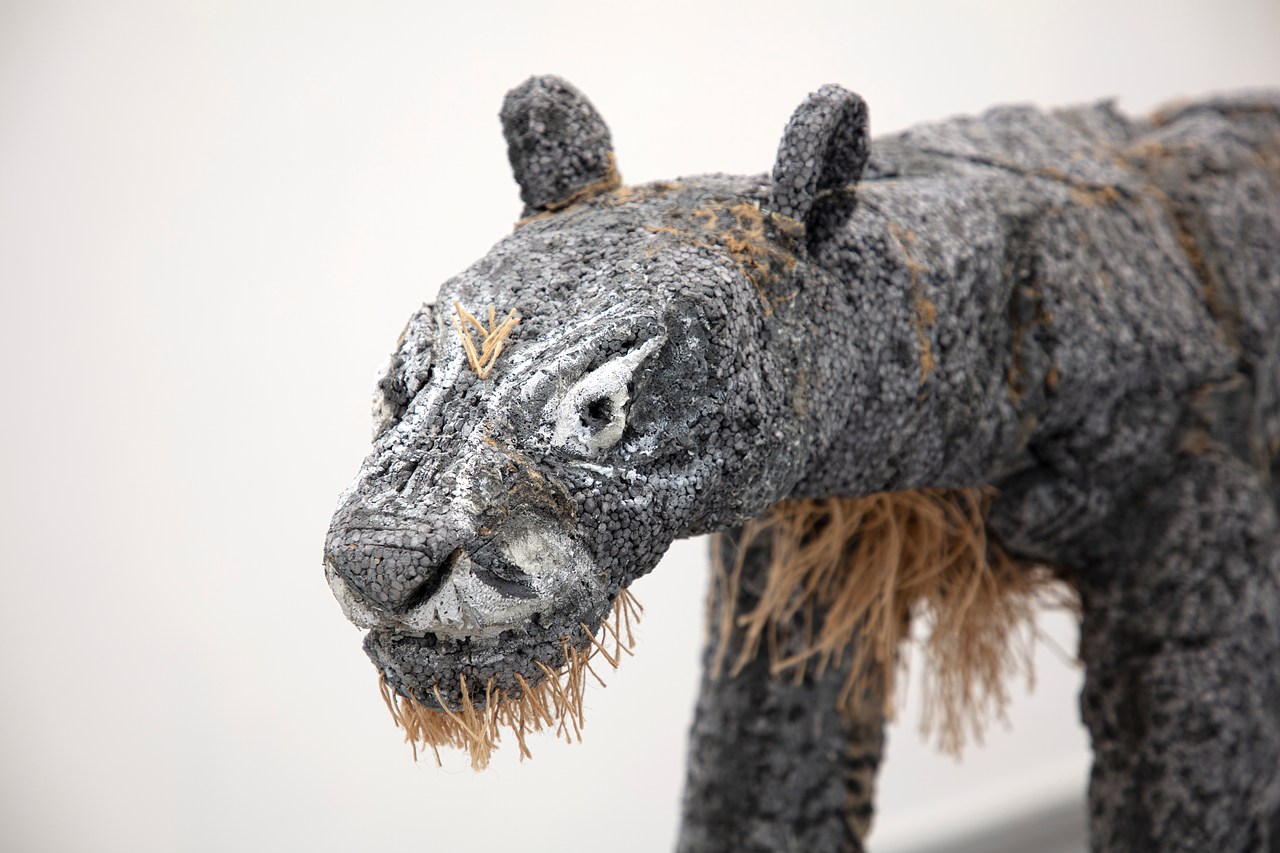The death knell has been rung for print media many times over in the past decades: thousands of local newspapers have shuttered, digital readership has shot up, and journalism has suffered a crisis. But if print really is dead, you wouldn’t know it from “Multiplicity: Blackness in American Collage,” a smart survey that features dozens of pieces that invest precious publications with new life.
Take Helina Metaferia’s Headdress 61 (2023), featuring artist Chase Williamson donning a grand, collaged headdress. This headdress is partially formed from newspaper clippings sourced from archives in Nashville, the city were Williamson was employed at the time, working as a curatorial fellow at the Frist Art Museum. Certain headlines are visible—one advertises a report on integration efforts in Birmingham, Alabama—while others are tucked away beneath images of demonstrations held following the 1968 killing of Martin Luther King, Jr. The yellowed, puckered quality of the clippings causes Williamson’s crown to appear golden.
There’s also Narcissister’s Untitled Kingston NY Collage Series (Grey hair quilt), from 2021, in which a person’s face is hidden beneath triangular cutouts of portraits found in magazines and art catalogs. It’s tough to tell which articles these swatches were excised from, but it’s clear that Narcissister has lovingly pored over that source material to assemble the dizzying array of eyes, noses, and mouths seen here. The artist has posed this mix-and-match array of facial features with one big hand set atop it all, its carefully manicured figures seemingly caressing these rephotographed papers.
Both Metaferia and Narcissister’s works evince a winsome geekiness: these artists, like nearly all the others in the show, have obviously spent hours in bookshops, libraries, and archives, plucking tattered volumes off the shelves and poring over their pages. Yet they are both not content to leave their materials as they found them—they make their magazines and newspapers their own and envision new possibilities for all that printed matter along the way.
“Multiplicity,” which opened earlier this summer at the Phillips Collection in Washington, D.C., after first appearing at the Frist in Nashville, adds a significant chapter to the history of collage. The technique has historically been associated with white artists like Georges Braque and Hannah Höch, who likewise relied heavily upon newspapers, cutting and pasting their words and pictures to form shocking new associations. (And, in the case of Höch, to commit acts of casual racism: she had a habit of appropriating images of African masks, then matching them with photographs of white women’s nude bodies.) To do so, for artists like Braque and Höch, was a means of provocation.
Copyright
© Art News







